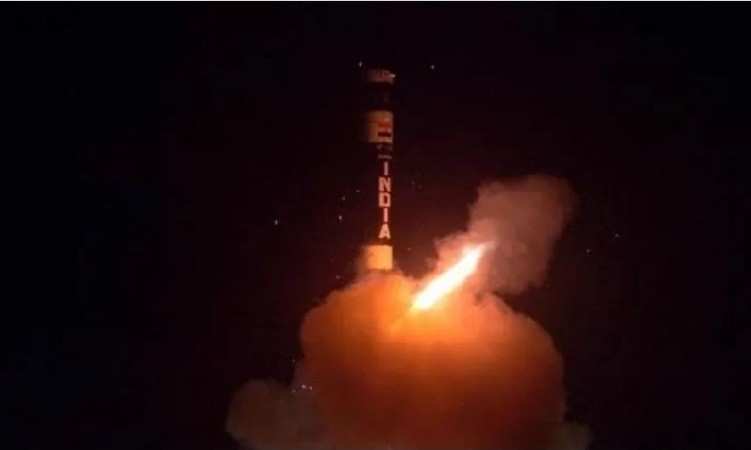
NEW DELHI: The Defence Research and Development Organisation (DRDO) successfully conducted a flight test of the new generation ballistic missile "Agni Prime."
Dr. APJ Abdul Kalam Island, off the coast of Odisha, was the site of a ballistic missile test for the "Agni Prime." All goals were effectively shown during the flight test, a defence ministry official reported on Thursday.
After three successful developmental tests of the missile, the Ministry reports that this was the first pre-induction night launch carried out by the users, proving the precision and dependability of the system.
The experiment was carried out on June 7 at night. The ministry stated that at the terminal point, range instrumentation including radar, telemetry, and electro optical tracking systems were deployed at various sites, including two down-range ships, to collect flight data spanning the whole trajectory of the vehicle.
Senior DRDO and Strategic Forces Command personnel were present for the successful flight test, which opened the door for the system's introduction into the Armed Forces.
Rajnath Singh, the defence minister, complimented DRDO and the Armed Forces on their achievement and the "Agni Prime's" textbook performance.
The teams from the DRDO laboratories and the users involved in the test launch were recognised for their contributions by the Secretary of the Department of Defence Research and Development and Chairman of the DRDO, Dr. Samir V. Kamat.
About Agni Agni Prime is a ballistic missile: Agni Prime is a ballistic missile developed by the Defense Research and Development Organization (DRDO) of India. It is an advanced variant of the Agni series of missiles and is designed for long-range precision strikes. While I don't have information specifically about the Agni Prime missile flight, I can provide some general details about ballistic missile flights.
Ballistic missiles like Agni Prime follow a specific flight trajectory. The missile is launched into the air using a rocket motor, after which it enters the boost phase. During this phase, the rocket motor propels the missile to reach its maximum velocity. Once the boost phase is complete, the missile enters the mid-course phase.
In the mid-course phase, the missile coasts through space towards its target. It follows a ballistic trajectory, which means it relies on its initial velocity and the force of gravity to guide it towards the target. This phase can last several minutes, during which the missile may maneuver to evade enemy defenses and increase its chances of successfully reaching the intended target.
After the mid-course phase, the missile enters the terminal phase, where it descends towards the target. This phase typically involves the reentry of the missile's warhead into the Earth's atmosphere. The warhead is protected by a heat shield to withstand the intense heat generated during reentry. Once in the atmosphere, the missile's guidance system guides it towards the target, ensuring precision in its final approach.
Indian Navy successfully carries out underwater test
India's space Sector advanced dramatically in last 9-yrs: Jitendra Singh